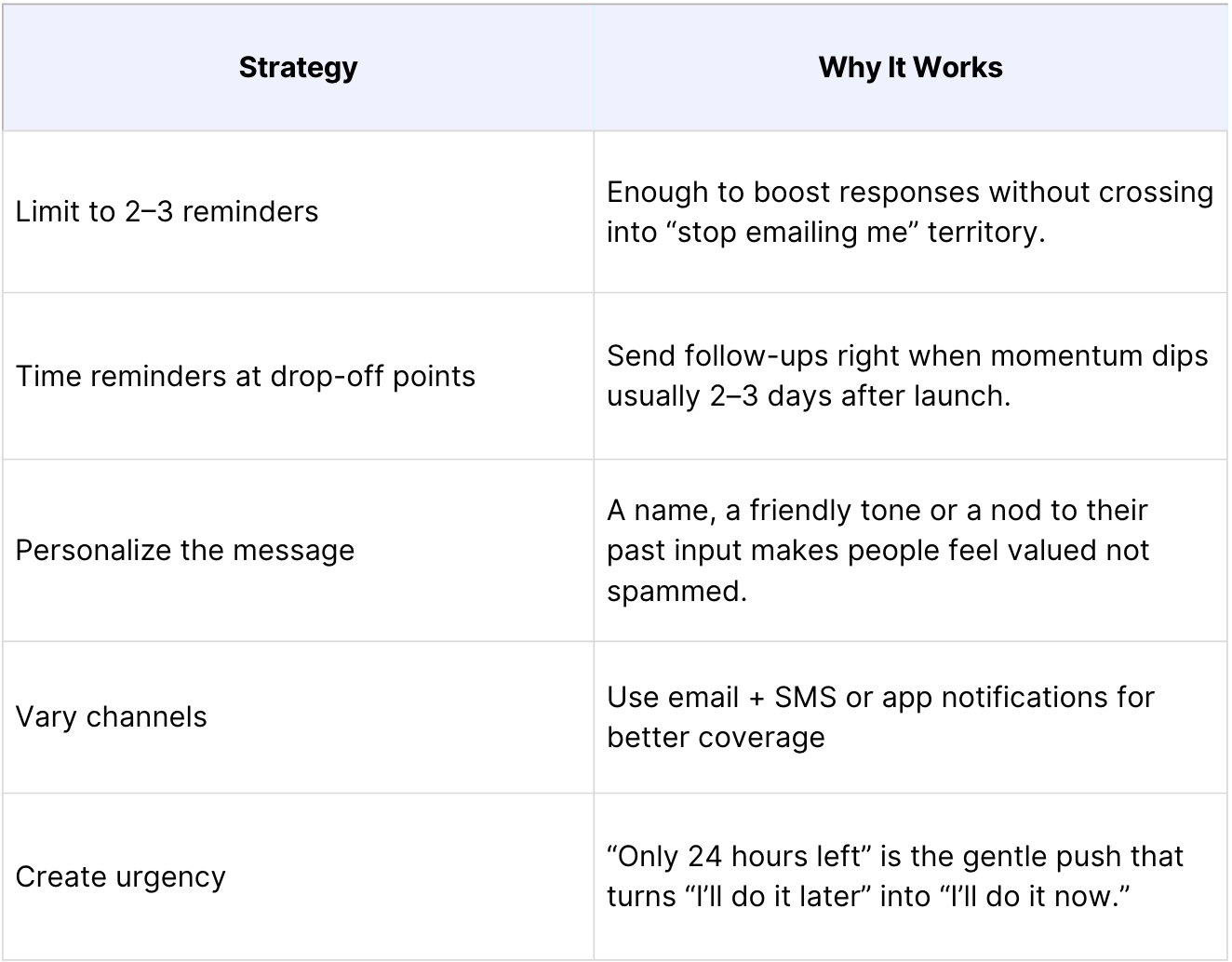The Hidden Power of Reminders in Survey Research: Why Timing & Method Matter More Than You Think
In the world of market research, we often obsess over the design of our surveys, question clarity, scale selection, visual layout but overlook one deceptively simple factor that can make or break our results are reminders.
While reminders might sound like a basic operational step, they have a significant impact on survey completion rates, sample diversity and data quality. It is also observed that well-timed and well-crafted reminders can lift participation rates by double digits.

Why Reminders Are Crucial
From my own experience running both consumer and B2B studies, respondents rarely jump at the first invitation. Without a strategic reminder schedule, even the most carefully recruited sample can fall short because sometimes life gets in the way, inboxes overflow, work deadlines pile up, personal priorities take over.
Here’s what research shows:
- Boosting Response Rates- Van Mol’s meta-analysis (2017) on web surveys found that sending 2–3 reminders significantly increased participation without drastically increasing respondent depletion.
- Reducing Sampling Bias- Late responders often differ demographically from early ones. By prompting them with reminders, you pull in a more diverse set of voices which is a key to ensure the results that reflect the entire audience.
- Securing Completeness in Multi-Wave Studies- In longitudinal or diary research, reminders help keep participants engaged across multiple touchpoints reducing costly dropout rates.
- Channel & Content Matter- Email works well for general online surveys, but SMS or push notifications often have higher open rates for time-sensitive or on-the-go audiences. Personalization in the content such as something simple as including a respondent’s name can increase a click-through.
Pew Research Center Example
Pew Research Center’s American Trends Panel (ATP) provides a perfect real-world example. In their November 2023 methodology report, Pew documented that panelists received:
- An initial email invitation
- Up to five follow-up reminders via email
- Optional SMS nudges for those who opted in
- Interactive voice reminders for certain subgroups
This results in consistently higher completion rates compared to waves with fewer reminders, especially among younger and harder-to-reach demographics. Moreover, multi-channel, persistent reminders are a key to maximizing reach without compromising data integrity.
How Market Researchers Can Turn Reminders into Results
From years in the field and plenty of trial and error, here’s the reminder playbook that actually works and backed by research and real-world wins.

The Market Researcher’s Take
Think of reminders not as “annoying,” but as engagement touchpoints and chances to highlight how much the respondent’s voice matters in shaping the insights we are gathering.When used thoughtfully, reminders go beyond simple admin work and become a powerful tool for boosting both the volume and the quality of your data.
If you’re planning a survey campaign in 2025, don’t just schedule your launch date, schedule your reminder as part of your research design. As sometimes, the difference between a good dataset and a great one is just a well-timed reminder.
With Q-Fi, setting survey reminders is quick and intuitive. You can automate follow-ups across email, SMS, or in-app notifications, personalize them for a human touch, and track their performance all without extra effort. It’s a simple way to keep respondents engaged and your data on track.






%20(6).png)





%20(8).png)
.png)
.jpg)
.png)
.png)


